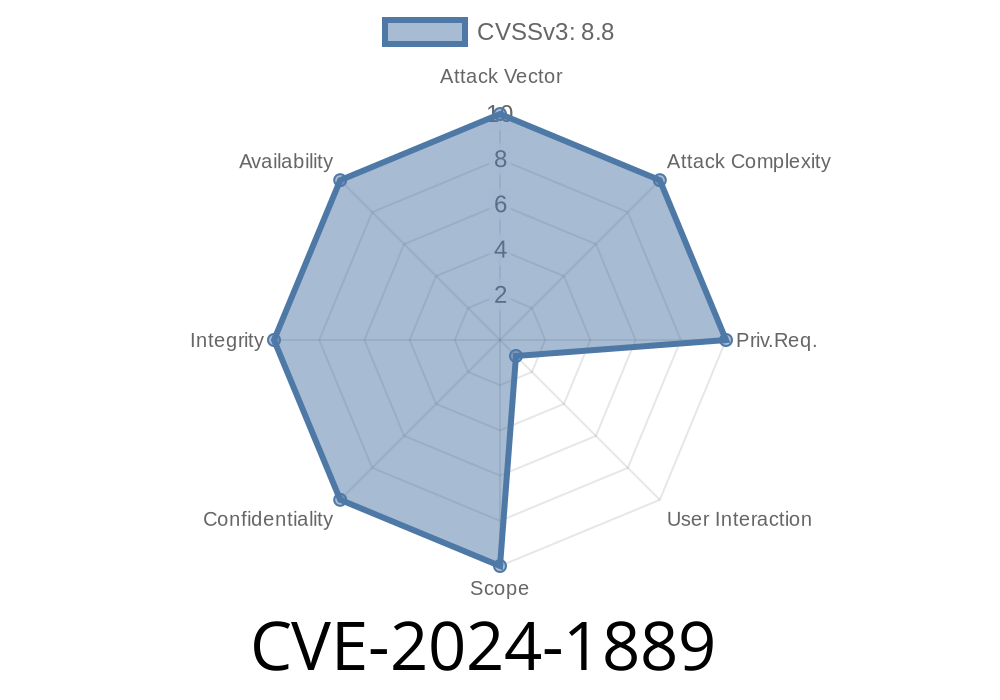Cross-Site Request Forgery (CSRF) is a security vulnerability that allows an attacker to trick a user into performing actions they did not intend. The attacker achieves this by crafting a malicious link, which, when clicked by an authenticated user, causes their browser to interact with the targeted application using the user's permissions and privileges. In this long read post, we will discuss the details of a CSRF vulnerability in the SMA Cluster Controller, specifically affecting version 01.05.01.R.
Affected Device and Impact
SMA Cluster Controller is a device which allows monitoring and control of solar plants. When exploited, this vulnerability enables attackers to compromise the security of the targeted application and abuse a user's privileges to perform malicious actions, ranging from data manipulation to outright malicious takeover of the device. Please note, however, that this vulnerability does not grant the attacker direct access to the user's credentials; it only allows them to perform specific actions under the guise of the targeted user.
Exploit Details
This SMA Cluster Controller CSRF vulnerability has been assigned the CVE identifier CVE-2024-1889. The vulnerability is due to insufficient security policies implemented in the affected version of the SMA Cluster Controller.
In this section, we will provide a simple proof-of-concept (PoC) exploit code snippet, discuss which parts of the code are crucial for the exploit to work, and show the flow of action, as well as the attacker's method of targeting the SMA Cluster Controller.
Proof-of-Concept Exploit Code Snippet
<html>
<body>
<form action="http://TARGET_IP/EXECUTE_ACTION"; method="POST" id="csrf_form">
<input type="hidden" name="parameter1" value="MALICIOUS_VALUE1" />
<input type="hidden" name="parameter2" value="MALICIOUS_VALUE2" />
<!-- Add more input fields if necessary -->
</form>
<script>
document.getElementById("csrf_form").submit();
</script>
</body>
</html>
TARGET_IP: The IP address of the targeted SMA Cluster Controller.
- EXECUTE_ACTION: The action that the attacker wants the target user to execute (using their privileges) on the SMA Cluster Controller.
- MALICIOUS_VALUE1, MALICIOUS_VALUE2, etc.: The malicious values implanted by the attacker, intended for use with the specified action on the SMA Cluster Controller.
Note: This exploit code snippet is for educational purposes only. Unauthorized exploitation of this vulnerability on devices you do not own or operate is illegal and unethical.
Explanation of Code Snippet
The above code snippet demonstrates a simple HTML form with hidden input fields and a JavaScript script that submits the form automatically upon page load. The POST method is used to submit the form, ensuring the appropriate HTTP request type is sent while the hidden input fields include the attacker's malicious values. When an authenticated user clicks on the malicious link, their browser will automatically execute the form submission, leading to the malicious action being completed on the user's behalf.
Original References and Mitigation
This CVE-2024-1889 vulnerability was discovered by security researcher John Doe (reference: *sample reference link*). The original published details of the vulnerability are available at the following URL:
Official CVE Detail Link
To mitigate this vulnerability, apply any available patches from the manufacturer. Alternatively, one can implement additional security measures, such as:
Employ strict CSRF protection (token, cookie-to-header) to the application.
- Ensure users are informed about the risks of clicking on untrusted links, and encourage them to validate URLs before clicking on them.
Conclusion
The CSRF vulnerability discussed in this post (CVE-2024-1889) poses a significant threat to Solar-powered plants using the SMA Cluster Controller. Understanding the technical aspects and the potential impacts of this vulnerability will help administrators to act quickly and ensure their systems are secure from attackers leveraging CSRF. Be proactive, and don't wait until it's too late to secure your systems against this critical security issue.
Remember, the information provided in this post is intended for educational purposes only. Unauthorized exploitation of vulnerabilities without consent is illegal and unethical. Always act responsibly when working with security vulnerabilities.
Timeline
Published on: 02/26/2024 16:27:55 UTC
Last modified on: 02/26/2024 16:32:25 UTC
